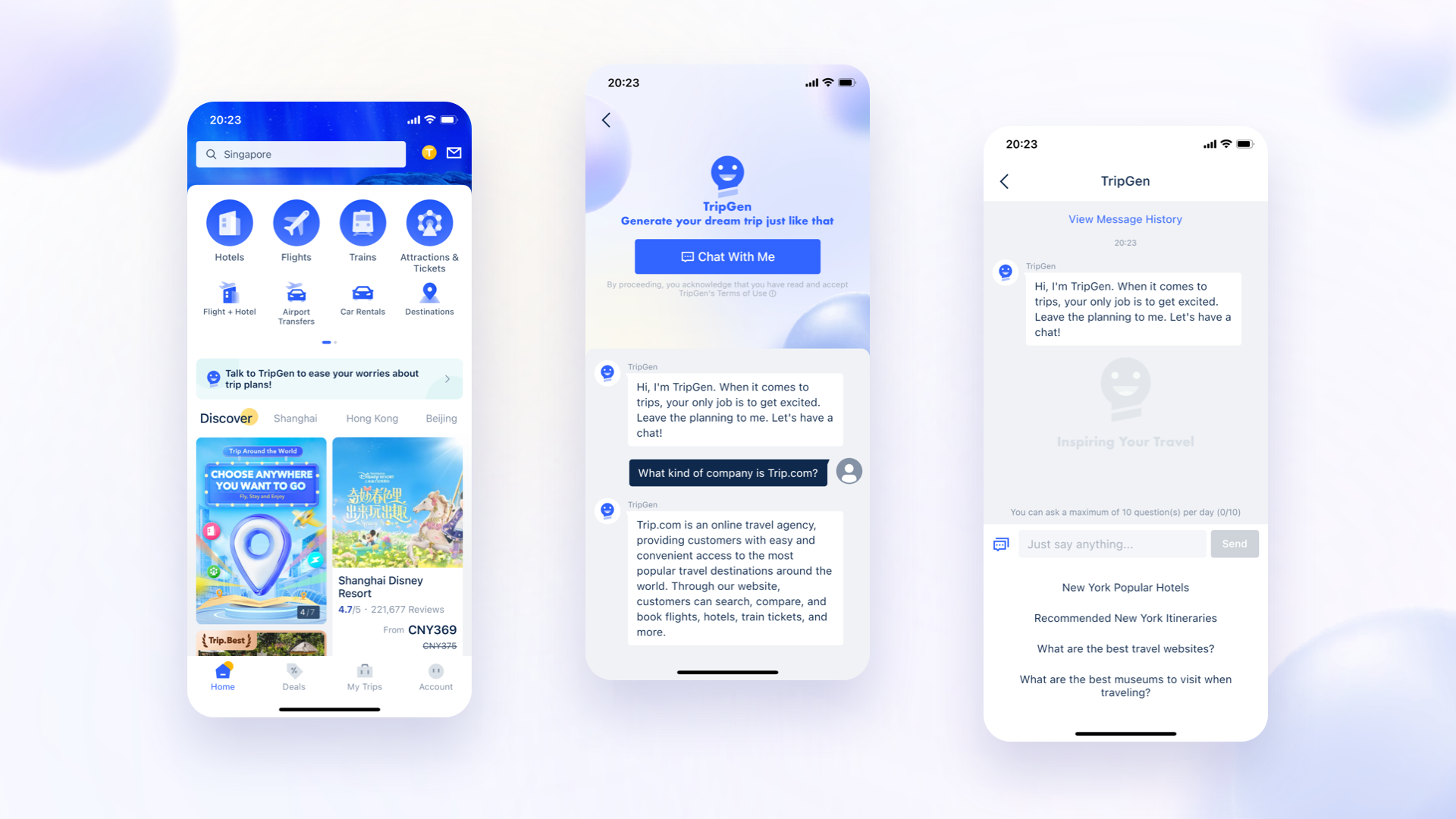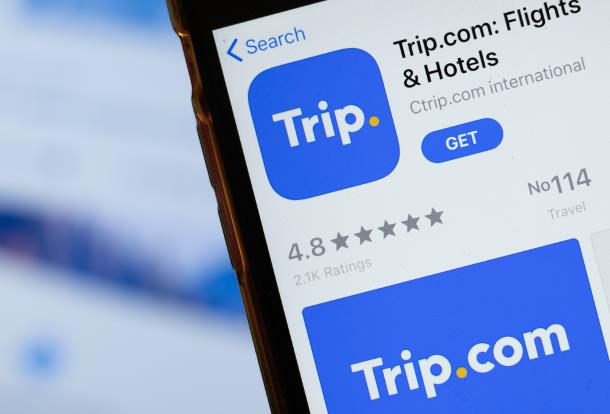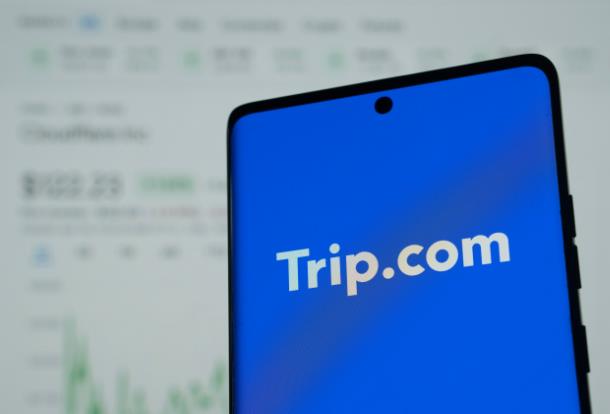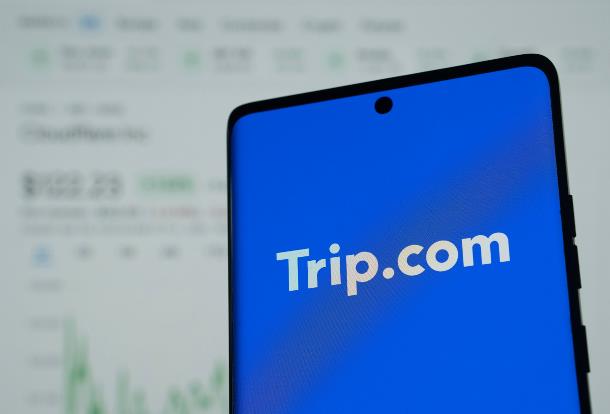ChinaTravelNews, Ritesh Gupta – A traveler has certain considerations while planning a cross-border trip, be it for the destination, air ticket, transportation, hotels etc. Considering that all of it tends to be a tedious and time-consuming affair, can a tool like ChatGPT or any other chatbot based on a large language model (LLM) or a deep learning algorithm deliver in terms of conversational answers to users’ queries?
The launch of Trip.com’s chatbot, TripGen, is showing progress on that count.
The tool’s latest iteration stands out for answering with precision, being able to fathom the intent of the traveler and keep the conversation going, and above all delivers human-like interpretation with its concise and logical answers. A couple of limitations – you can ask only 10 questions in a day (this question limit is an initial setting for the testing phase and Trip.com have plans to change the quota later) and can’t book within the interface at this point of time.
Amy Wei, Senior Product Director at Trip.com Group and Product Owner of TripGen, who spoke from Vietnam to ChinaTravelNews.com is upbeat about the new initiative.
Amy is confident that the tool is capable of coming up with value-added recommendations, one that makes your trip better. She cited an example where she interacted with TripGen for a day-tour suggestions and itinerary in Saigon. More specific the question, more personalized the response, she said. All of this backed by previous data available within the app (bookings, search and so on).
When the chatbot was tested, say for a direct flight from Shanghai to London (the answer was no flights available) and also from New Delhi to London for a specific date (resulted in the name of the airlines, departure and arrival time, travelling via tube, hotels around a location in London etc.), it was better than ChatGPT on certain counts.
The team shared that currently TripGen’s answers are based on data up to 2021. Going forward the plan is to keep the answer up to date and combine it with data available in Trip.com in the tool’s future iterations. This is a continuous process in terms of making changes and attaining better results.
Conversational tech + Trip.com’s travel expertise
Trip.com’s team shared that TripGen has integrated the OpenAI API (which developed ChatGPT based on GPT (Generative Pre-trained Transformer) architecture).

“This tool has been trained to deliver in terms of communication and natural language. Starting with ChatGPT type nature of conversation with customers, we continuously “teach” it in terms of how to deliver by banking on details about a user we have plus knowledge in our system,” she said. The key lies in the capability of the algorithm to identify, encapsulate, foretell and generate text and other content based on knowledge gained from massive datasets.
“TripGen is built on the OpenAI capability. We teach with our knowledge (of travel). We have been focusing on positioning TripGen as an offering that is representative of Trip.com and its capability,” she said. The chatbot, like any that are embracing human-like interactions, are doing away with structured Q&A format, where one mostly ends up asking a question based on options to choose from or only certain part of a trip. For instance, the previous interaction with Trip.com’s bot was mainly about post-booking queries like information related to check-in for a flight.
The user interface plus the ability to communicate not only via text but also in verbal (voice recognition and text-to-speech languages) will make LLM chatbots more efficient, she said. “The capability in terms of semantic as well as complex queries.
According to Amy, it can be experienced that this tool gives a straightforward answer, useful in real travel scenarios.
Overcoming limitations of previous chatbots
Talking further about training of the chatbot, Amy explained that the tool is shaped up in such a way that there is hardly any scope for error rate. As it was seen in previous versions of chatbots, when a user gets stuck they generally had to start the entire conversation again (like choosing from the options all over). So finding a way out when TripGen doesn’t know an answer and it can say “I don’t know that”.
“We give a list of things that the tool can answer. We have a black list or white list (while training).
There is no term like error rate (in our key performance metrics). Teaching goes on and it gets better (in its interactions),” she said.
The team is also exploring the option of a human answering the query within the chat flow. “We are exploring the cases together – that is the conversation starting with TripGen and how a human agent intervenes when necessary,” she said.
As for letting one book, she said, “At this moment, we are still trying to explore the possibility of letting one book within the chatbot interface. For instance, interacting and asking about what to do and seamlessly a user being served with a link to check prices and book, so starting from search and taking it to the booking phase.” The timeline is for the same less than a quarter from here on. “Our Chinese development team is agile and quite fast,” mentioned Amy.
Search vs. ChatGPT
Amy felt that traditional search will continue to have its place. The difference where tools like ChatGPT or TripGen come in is their ability to summarize key points. And then for detailed information when can always visit a search engine. It also means that brands can strengthen their digital assets, building on the stickiness with what Amy described as responding to “travel scenarios”, for example. “User behaviour will change (with new style of chatbots). It means that there is an opportunity for brands to let user spend more time within the app,” she said.
She also mentioned that companies like Trip.com that have been focusing on content generation, will only benefit from such initiative. “It will help in generating quality content. Similar questions and answers can be broadcast to users in the future,” said Amy. TripGen currently supports English, Japanese, Korean and traditional Chinese. “Right now the focus is on features and the interface,” she said, when asked about plans for European languages considering the way the team has been working on its app for this region.
Future
Amy praised the effort of the development team and their constant interaction within the company that is taking such interactions to a “whole new level”.
Referring to the engineering work, she said the engineering team is interacting with the customer service team and building on the ChatGPT/ OpenAI model. “We do have the same capability as ChatGPT, but we are constantly trying to teach TripGen specific functions, understanding the Trip.com’s knowledge, the data we have, and the training focuses on that. All of this requires more engineering work,” concluded Amy.




